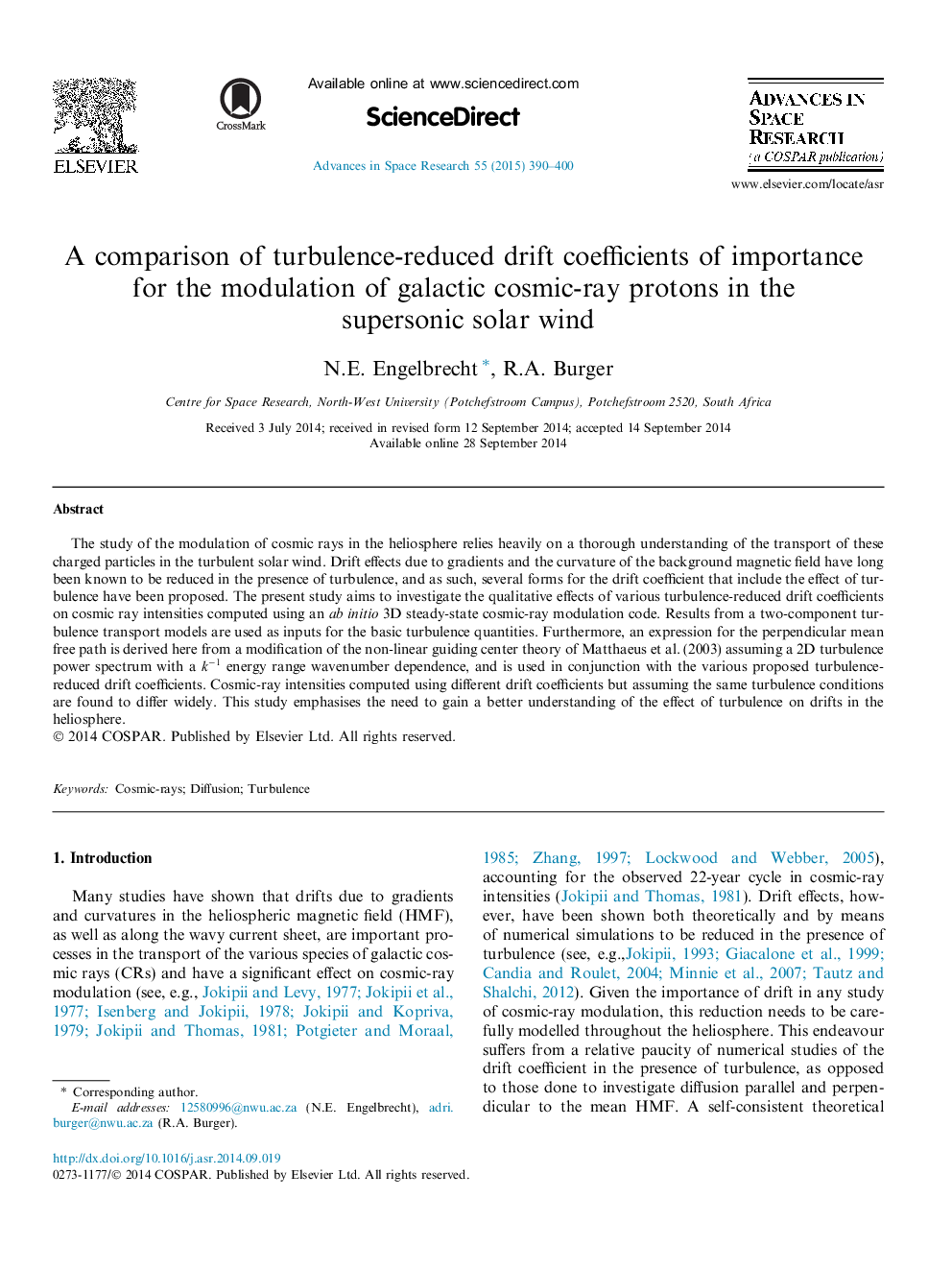| Article ID | Journal | Published Year | Pages | File Type |
|---|---|---|---|---|
| 1764139 | Advances in Space Research | 2015 | 11 Pages |
The study of the modulation of cosmic rays in the heliosphere relies heavily on a thorough understanding of the transport of these charged particles in the turbulent solar wind. Drift effects due to gradients and the curvature of the background magnetic field have long been known to be reduced in the presence of turbulence, and as such, several forms for the drift coefficient that include the effect of turbulence have been proposed. The present study aims to investigate the qualitative effects of various turbulence-reduced drift coefficients on cosmic ray intensities computed using an ab initio 3D steady-state cosmic-ray modulation code. Results from a two-component turbulence transport models are used as inputs for the basic turbulence quantities. Furthermore, an expression for the perpendicular mean free path is derived here from a modification of the non-linear guiding center theory of Matthaeus et al. (2003) assuming a 2D turbulence power spectrum with a k-1k-1 energy range wavenumber dependence, and is used in conjunction with the various proposed turbulence-reduced drift coefficients. Cosmic-ray intensities computed using different drift coefficients but assuming the same turbulence conditions are found to differ widely. This study emphasises the need to gain a better understanding of the effect of turbulence on drifts in the heliosphere.
